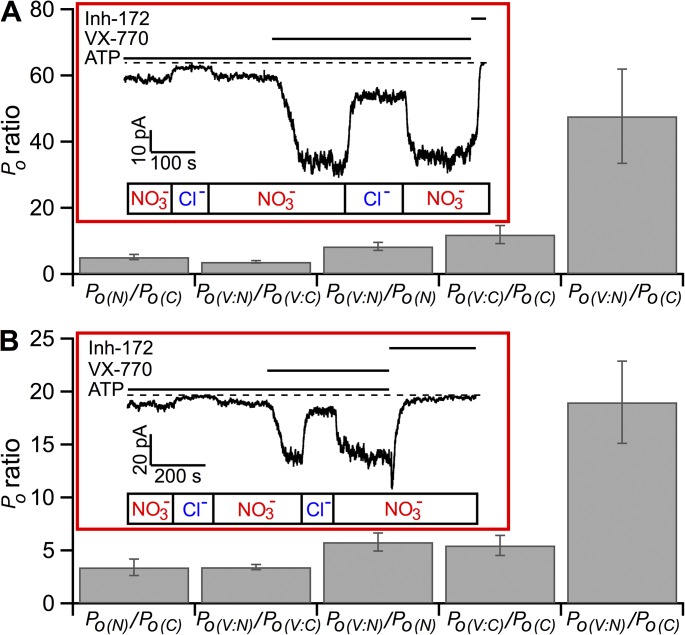Figure 8.
NO3− and VX-770 potentiate ΔNBD2- and G551D-CFTR in an independent manner. (A) Quantitative assessments of the effect of NO3− and VX-770 on ΔNBD2-CFTR’s activity. The current trace shown in the inset represents the standard protocol that allows us to calculate the ratios of mean current amplitudes for each treatment as labeled. A specific CFTR inhibitor, Inh-172, was applied at the end of each experiment to attain the baseline. These ratios were converted to ratios of Po by correcting differences in single-channel amplitudes (see Materials and methods for detail). The bar chart summarizes these results. Po(N), Po in NO3− bath; Po(C), Po in Cl− bath; Po(V:N), Po in NO3− bath with VX-770; Po(V:C), Po in Cl− bath with VX-770. (B) Independent potentiation of G551D-CFTR by NO3− and VX-770. The current trace in the inset illustrates the results of G551D-CFTR channels under the same experimental protocol shown in A. Summary of the Po ratios obtained as described above. The error bars represent the SEM of the mean.

